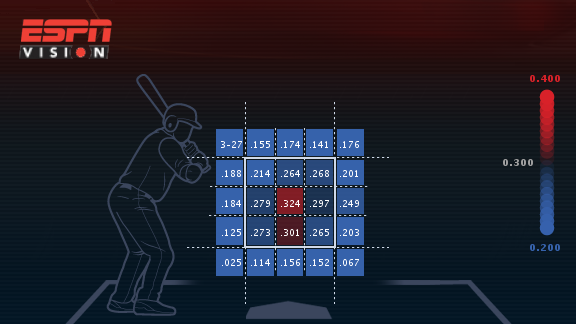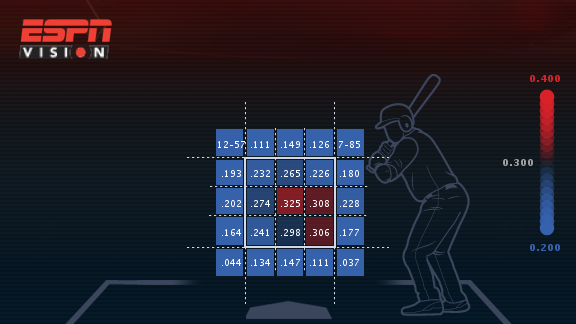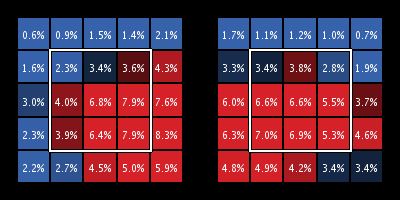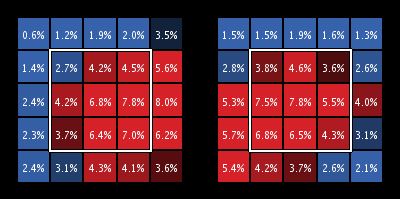Pitching Inside
The D-backs front office has been furiously remaking the team this offseason, and one curious byproduct has been taking a grounder-leaning pitching staff and replacing it with a fly ball one. And while Tony La Russa has only been at the helm for less than a year, there was an incident last year that might tell us why.
Regardless of whether it was Miguel Montero‘s pitch calling, rigid pitching plans or Chase Field, something wasn’t working on the pitching side last year. And while a humidor might be the most effective solution to the team’s pitching woes, the departure of Montero and replacement of 60% of the starting rotation can only help. If everything is not working, any change is a good idea, even if on paper it’s not necessarily the best.
Remember, though, the big controversy last summer about retaliation at the plate. This came to a head when the D-backs hit Andrew McCutchen in the back a day after Paul Goldschmidt‘s hand was broken by an inside pitch. From Nick Piecoro’s excellent article in the aftermath:
Though many critics argued the Diamondbacks were retaliating for an accidental hit by pitch on Goldschmidt, La Russa believes the Pirates were still responsible regardless of intent.
The crux of his argument lies in what he believes to be the Pirates’ pitching philosophy. They don’t just pitch inside, La Russa said. They pitch up and in. And by choosing to do so, they have to live with the consequences.
“(Pitching up and in has its) rewards because I don’t care if you’re a right-hander or left-hander, that spot right there, nobody gets to that pitch,” La Russa said. “So it’s a hole for everybody. The problem is, unless you have Greg Maddux pitching, that’s a very risky area to throw in. Because you don’t want to miss out over the plate because that’s launch territory, so you’ll throw the ball here or in and that generates more hits batsmen.”
La Russa also told Piecoro that he doesn’t push for pitching up and in, and that he didn’t push for that with the Cardinals, either. He noted that pitching in means pitching down, because up and in “is such a dangerous area.”
Say what you will about this philosophy, but La Russa was dead on in terms of how the Pirates have recently approached the game, as Jeff Sullivan explored back in August. And when one of the teams that has become reliant on analytics does something new — and simultaneously has success — I think it’s on us to listen, and to explore whether other teams should do it, too.
Check this out, courtesy of ESPN Stats & Info: 2014 batting average statistics for all lefty batters.
And all righty batters:
Note that in terms of batting average, the ninth of the plate at which batters from both sides did worst was up and in. Weirdly, up and away was a problem for right-handed hitters but not lefties; still, low and away was no picnic for anyone. One can’t go after up and in without, as La Russa noted, occasionally getting a little too up and in. And the same thing goes in the other direction; sail just a little down, to inside middle, and you’re in a happy zone for both types of hitters. That’s flirting with disaster, and yet — up and in is the ninth of the zone that is most vulnerable. Maybe there’s something to it.
The D-backs, though, haven’t done much to take advantage recently. Here are their 2014 pitch count frequencies, against lefties on the left, and righties on the right:
Compare that to MLB overall last season:
In terms of up and in, 0.5% and 0.8% may not seem like a lot, but we’re talking about more than 13,000 pitches; 0.8% is over 100 pitches. The D-backs pitched down more than their rivals, but what they did much more than other teams was pitch away against lefties. Against righties, the plan was mostly down — and down and in.
And it’s not just a question of batting average. Again from ESPN Stats & Info, the D-backs pitching staff gave up a Hard Hit Average of just 0.086 on pitches up and in; the league saw a similar HHAV of 0.089. That’s less than half of the 0.188 HHAV given up by all MLB pitchers on pitches in the strike zone. Down and away came in second at 0.120 HHAV, which is nothing to shake a stick at, but third and fourth best? Those ninths of the zone were middle-in (0.117 HHAV) and up-middle (.178). In terms of getting tattooed by the opposing batter, throwing up and in was much more profitable than throwing down and away — and missing when throwing up and in was also much less costly.
Whether the team should pursue pitching up and in is still a question open for debate; few teams know as well as the D-backs that retaliation can be costly. Still, is this change in the works? Wade Miley had one of the smallest up-and-in pitch frequencies in baseball (1.3% to lefties, 1.8% to righties), and if the new fly ball staff is to succeed, it may need to throw more pitches at the top of the zone anyway. Exploring more of a commitment to the part of the strike zone up and in could be an important way forward.
5 Responses to Pitching Inside
Leave a Reply Cancel reply
Recent Posts
@ryanpmorrison
 Congrats to @OutfieldGrass24 on a beautiful life, wedding and wife. He deserves all of it (they both do). And I cou… https://t.co/JzJtQ7TgdJ, Jul 23
Congrats to @OutfieldGrass24 on a beautiful life, wedding and wife. He deserves all of it (they both do). And I cou… https://t.co/JzJtQ7TgdJ, Jul 23 Best part of Peralta’s 108 mph fliner over the fence, IMHO: that he got that much leverage despite scooping it out… https://t.co/ivBrl76adF, Apr 08
Best part of Peralta’s 108 mph fliner over the fence, IMHO: that he got that much leverage despite scooping it out… https://t.co/ivBrl76adF, Apr 08 RT @OutfieldGrass24: If you're bored of watching Patrick Corbin get dudes out, you can check out my latest for @TheAthleticAZ. https://t.co/k1DymgY7zO, Apr 04
RT @OutfieldGrass24: If you're bored of watching Patrick Corbin get dudes out, you can check out my latest for @TheAthleticAZ. https://t.co/k1DymgY7zO, Apr 04 Of course, they may have overtaken the league lead for outs on the bases just now, also...
But in 2017, Arizona ha… https://t.co/38MBrr2D4b, Apr 04
Of course, they may have overtaken the league lead for outs on the bases just now, also...
But in 2017, Arizona ha… https://t.co/38MBrr2D4b, Apr 04 Prior to the games today, there had only been 5 steals of 3rd this season (and no CS) in the National League. The… https://t.co/gVVL84vPQ5, Apr 04
Prior to the games today, there had only been 5 steals of 3rd this season (and no CS) in the National League. The… https://t.co/gVVL84vPQ5, Apr 04
Powered by: Web Designers@outfieldgrass24
 She didn't even need to watch it go in. Someone give her a bat to flip. https://t.co/3cTRPd8s2a, 1 hour ago
She didn't even need to watch it go in. Someone give her a bat to flip. https://t.co/3cTRPd8s2a, 1 hour ago RT @cdgoldstein: I scheduled it late and forgot to promote it yesterday. Got a few questions in the queue but could use some more. C… https://t.co/38ul8wIsAD, 10 hours ago
RT @cdgoldstein: I scheduled it late and forgot to promote it yesterday. Got a few questions in the queue but could use some more. C… https://t.co/38ul8wIsAD, 10 hours ago RT @BillyBall: Great card and more importantly a really great and fun book by @dianagram. They have done a killer job on research… https://t.co/QgcHl7umwl, 24 hours ago
RT @BillyBall: Great card and more importantly a really great and fun book by @dianagram. They have done a killer job on research… https://t.co/QgcHl7umwl, 24 hours ago RT @baseballandthe2: The @Dbacks and @RaysBaseball were born 25 years ago on 3/9/95 when #MLB owners admitted the 2 new teams by a vote… https://t.co/1rzp6ax8wv, Mar 09
RT @baseballandthe2: The @Dbacks and @RaysBaseball were born 25 years ago on 3/9/95 when #MLB owners admitted the 2 new teams by a vote… https://t.co/1rzp6ax8wv, Mar 09 #Dbacks' 2018 1st round pick Matt McLain hit .203/.276/.355 as a freshman at UCLA last year. This season? A tidy li… https://t.co/yM48j1ebrr, Mar 07
#Dbacks' 2018 1st round pick Matt McLain hit .203/.276/.355 as a freshman at UCLA last year. This season? A tidy li… https://t.co/yM48j1ebrr, Mar 07
Powered by: Web Designers









Best part of this article was the minimalist title and all the other stuff too.
But seriously, one wonders (as do I) if up-and-in is synonymous with hard throwers for the most part. I know about Matt Cain in the past and Chris Young last year, but it seems as if the pitchers willing to go up-and-in are those with plus velo. The D-backs didn’t necessarily have a lot of that last year.
Also, I’d be interested to know how up-and-in tendencies vary between starters and relievers.
Check out the red averages since price got there. Is there a correalation? He likes his relievers going in. He definitely likes Relievers that have a power arm with power sliders dont have to necessarily go up. That combo just keeps guys from digging in. The puig incident might of soured the dbacks, from going in and up.one of the many bs things your collegues were embarrasing wrong about. Anyway, regarding montero yeah he wasnt in sync alot with the pitchers their stuff, during the game and mixing stuff up, it could also of been said pitchers too, just didnt have the stuff but yeah he was no molina. I dont have editor so this is all over the place. Bradley will have a higher walk rate, but if he can hit that spot, and comeback with that hook. So basically him hitting that spot will help make him an ace. But, then do we have to deal with your collegues accusing guys of being headhunters. Ooh doggy. Shipley moves guys feet with balls at the hip, so he doesnt need that spot. then com es back with his breaking pitch.. Scott baker is a pounder but velo is down and breaking stuff isnt as sharp, but is a master at this article theme.
This is anecdotal, and totally not helpful, but as a hitter, I liked low and away, I felt it allowed me to hit it just past the infielders, maybe because I hit with my hips (didn’t step), and I am short.
I agree with La Russa re: problems with up and in. I just do not think the Dbacks staff has the precision to not miss, and when you miss up there, you miss big.
Another issue is a team having a pitching identity of pitching to a certain spot, if you are an opposing hitter, aren’t you looking to this and expecting a miss?
This was good stuff, I love the graphics and you did a great job analyzing the data.
Which brings up another question, did the dodgers really turn down the trade for bradley/kemp? health disgruntled kemp, led to trading him, just cant believe they would turn bradley down. And cant believe we would trade him. All sides in this deal were obtuse.
Rotational swings dont like down and away. Its a six one out generally.